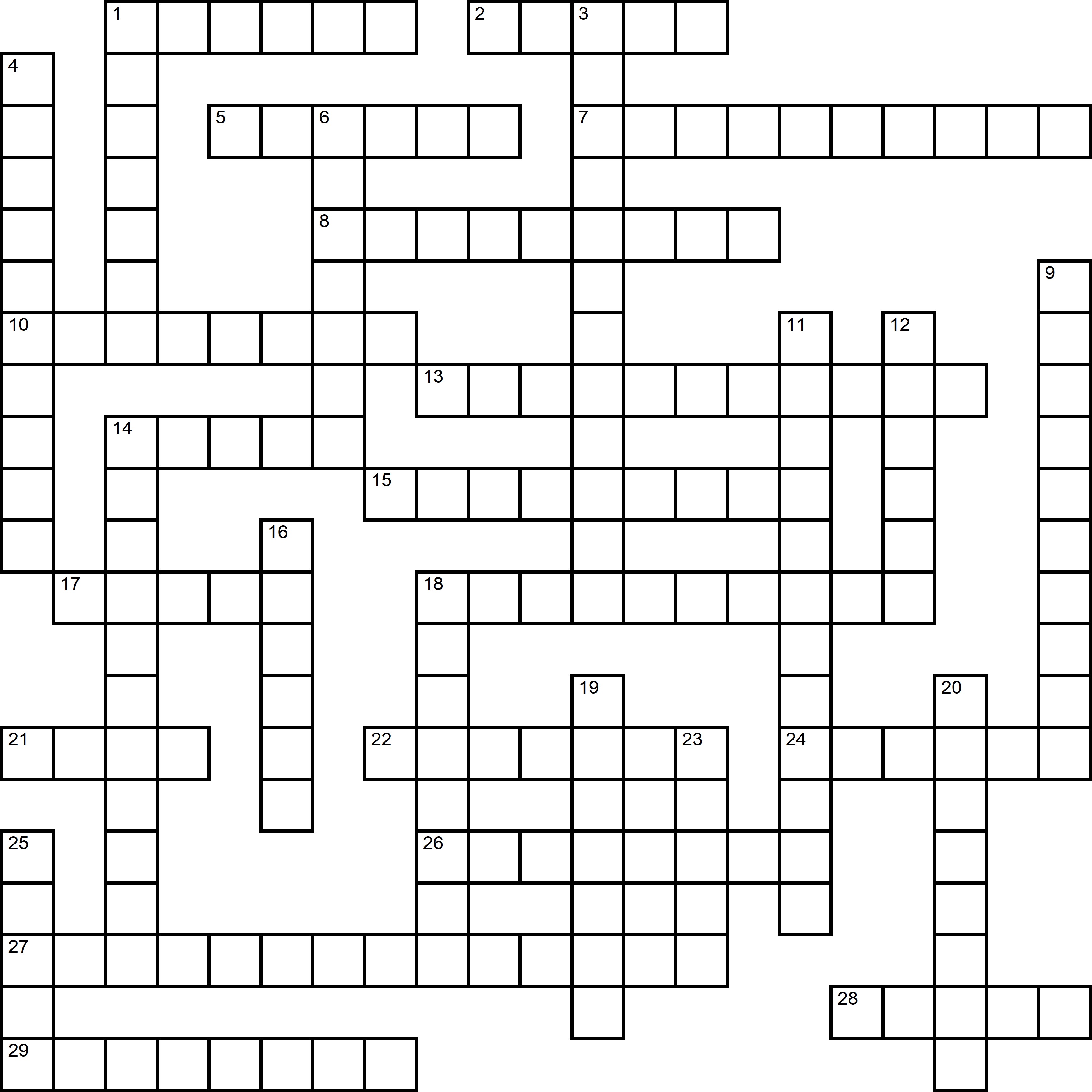

Puzzles are often one of several standard sizes. Grids forming shapes other than squares are also occasionally used. "Free form" crosswords ("criss-cross" puzzles), which have simple, asymmetric designs, are often seen on school worksheets, children's menus, and other entertainment for children. Two of the common ones are barred crosswords, which use bold lines between squares (instead of shaded squares) to separate answers, and circular designs, with answers entered either radially or in concentric circles.

Substantial variants from the usual forms exist. These puzzles usually have no symmetry in the grid but instead often have a common theme (literature, music, nature, geography, events of a special year, etc.) The grid often has one or more photos replacing a block of squares as a clue to one or several answers for example, the name of a pop star, or some kind of rhyme or phrase that can be associated with the photo. This style of grid is also used in several countries other than Sweden, often in magazines, but also in daily newspapers. Arrows can be omitted from clue cells, in which case the convention is for the answer to go horizontally to the right of the clue cell, or – if the clue cell is split vertically and contains two clues – for the answer to go horizontally to the right for the top clue and vertically below for the bottom clue. Instead, clues are contained in the cells which do not contain answers, with arrows indicating where and in what direction to fill in answers. The "Swedish-style" grid (picture crosswords) uses no clue numbers. they may not be orthogonally contiguous) and that the corner squares must be white. The design of Japanese crossword grids often follows two additional rules: that shaded cells may not share a side (i.e. Most puzzle designs also require that all white cells be orthogonally contiguous (that is, connected in one mass through shared sides, to form a single polyomino). For example, if the top row has an answer running all the way across, there will often be no across answers in the second row.Īnother tradition in puzzle design (in North America, India, and Britain particularly) is that the grid should have 180-degree rotational (also known as "radial") symmetry, so that its pattern appears the same if the paper is turned upside down. Crossword grids elsewhere, such as in Britain, South Africa, India and Australia, have a lattice-like structure, with a higher percentage of shaded squares (around 25%), leaving about half the letters in an answer unchecked. In such puzzles shaded squares are typically limited to about one-sixth of the total. is part of both an "across" word and a "down" word) and usually each answer must contain at least three letters.

Check it out here: Diccionario Crucigramista.Barred grid where bold bars are used instead of shaded blocks to separate the wordsĬrossword grids such as those appearing in most North American newspapers and magazines feature solid areas of white squares. We are developing a spanish language crossword dictionary. Ready to try it? Click here to search our online crossword dictionary. On set times the server will email all other members the list of puzzle clues.All members then will be able to add possible solutions for these puzzle clues to our database, hence helping out the original searcher of the clue! Check our members section to see how you can become a member and become part of our crossword puzzle solver community. If a search didn't turn up any answers members will be asked to add this puzzle clue to the 'not in dictionary list'. This 'members only' feature (don't fear, membership is free!)works as follow:

You can search for the solutions by either clue or pattern.Īnd in case our crossword dictionary doesn't contain the solution, offers you a special crossword puzzle help feature.
#Dictionary.com crosswords free
The most powerfull and totally free online crossword solver.Ĭontaining over 220,000 puzzle clues, our Online Crossword Dictionary is your crossword solver.


 0 kommentar(er)
0 kommentar(er)
